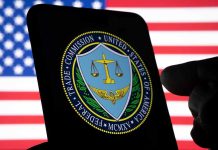
The U.S. Department of Transportation adjusts its drone policy post-backlash to aid Hurricane Helene relief.
At a Glance
- The U.S. DOT clarified and revised its stance on drone flight restrictions for Hurricane Helene relief.
- Initial restrictions faced criticism for potentially obstructing volunteer and documentation efforts.
- Temporary flight restrictions are coordinated with local authorities for safety.
- Drones now have leeway to operate in coordination with emergency services.
- North Carolina saw significant casualties with ongoing FEMA coordination efforts.
Department of Transportation Clarification on Drone Use
The Department of Transportation refined its drone policy amidst backlash related to Hurricane Helene relief efforts. Initially, DOT’s communication stirred controversy by discouraging civilian drones near disaster zones, threatening penalties for non-compliance. This raised concerns over impeding relief and documentation initiatives. The message was later corrected, clarifying relaxed flight restrictions with proper coordination. This policy adjustment, clarified by the FAA, allows drones to safely assist in rescue operations when aligned with emergency responders.
Temporary Flight Restrictions (TFRs) were at the heart of the issue, requested by local authorities to ensure safety. Both piloted and unmanned aircraft were subjected to these restrictions. With DOT’s clarification, drones capable of coordination with emergency teams can now aid in search and rescue missions, eliminating the fear of obstructing genuine relief operations. This decision comes after significant criticism on social media, voicing concerns over community-driven assistance efforts being hindered.
🚨 Drone pilots: Do not fly your drone near or around rescue and recovery efforts for Hurricane Helene.
Interfering with emergency response operations impacts search and rescue operations on the ground. For more information on temporary flight restrictions follow: @FAADroneZone pic.twitter.com/muxHefL1sH
— U.S. Department of Transportation (@USDOT) October 2, 2024
Backlash and Social Media Criticism
The DOT faced criticism across various platforms, with Transportation Secretary Pete Buttigieg’s video and statements receiving negative feedback. Social media users and critics argued these restrictions could bar civilians from participating in meaningful assistance, particularly in search and retrieval tasks. “Interfering with emergency response operations impacts search and rescue operations on the ground,” highlighted criticism articulated on the official DOT X account.
“You would think more eyes in the sky would be a good thing when there are people that need to be rescued but what do I know,” one X user replied to the DOT’s initial warnings.
In North Carolina, the suspension of private drone flights in Hurricane Helene flood zones came under the spotlight, leading to questions on free press and citizen journalism, potentially interfering with documenting the devastation. While the death toll exceeded 200, with over 94 fatalities reported in North Carolina, the need for efficient disaster response remains urgent.
FAA and FEMA’s Role in Disaster Management
The FAA continues to play a critical role in managing Hurricane Helene’s aftermath, focusing on tasks like restoring communication channels and supplying crucial aid through coordinated flight missions. The agency works alongside FEMA, actively involved in rescue and relief operations, despite public dissatisfaction over FEMA’s response pace and resource allocation. Nevertheless, collaborative efforts have managed to rescue over 2,100 individuals, highlighting the vital role of drones in delivering essential supplies.
“At times, local authorities and law enforcement request the Federal Aviation Administration issue a Temporary Flight Restriction (TFR) in order to ensure safety for aircraft or drones operating in certain areas,” the spokesperson said in a statement. “These restrictions occur at the request of local authorities or law enforcement. FAA does not put these into place without requests.”
Local and federal agencies alike prepare to intensify their actions, considering ongoing relief requirements and the significant impact of Hurricane Helene. With drones now regulated and more efficiently integrated into rescue operations, government units hope to streamline processes and support recovery efforts, reinforcing overall safety and community support in disaster-stricken areas.










